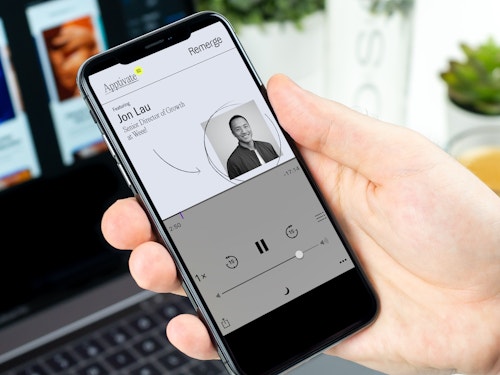Ep. 82 How to Build Social Validation for a Mobile App (Weee!)
April 07, 2021

Do consumers think your app is too good to be true? Today’s guest talks about establishing social validation to curb skepticism. We dive into different creative strategies including the use of influencers, creating ads with different angles for the same user, and building the narrative hook that delivers truth behind every piece of creative.
Jon Lau is the Senior Director of Growth at Weee!, a company delivering Asian & Hispanic groceries with zero service fees and free delivery. Previous to the e-grocer app, Jon hailed from a background in banking and then mobile marketing for gaming companies, like DraftKings, Smule, and Playsonic.
Listen and Subscribe
Listen on Spotify
Listen on Apple Podcasts
Listen on Google Podcasts
Questions Jon Answers In This Episode
- Can you tell us about what Weee! does and who you serve?
- What would you attribute the company’s jump from being valued at $600 million last year to $2.8 billion now? What do you attribute that growth to?
- Have you found that the general consumer is now using Weee! or is it predominantly people from the cultures you serve?
- What is your creative strategy? Is it mostly focused on educating a consumer base? Celebrating heritage?
- How do you establish social validation for your brand?
- How do you go about telling a story about your brand on platforms like Facebook and display?
Timestamp
- 3:06 Jon’s background: gaming to e-grocer
- 10:46 What’s is Weee!
- 12:27 Weee!’s explosive growth
- 14:45 Growing the second-generation Asian and Hispanic user base
- 16:19 Creative strategy: cultural heritage, food discovery, education
- 18:00 Establishing social validation for a brand
- 21:51 Telling your brand story
Quotes
(12:31-12:55) “It goes to show the grocery potential of different ethnicities in the U.S. So, specifically here, we’re talking about the Asian and Hispanic population in the U.S., which by and large I would say, depending on where you live, can be relatively underserved. And these are populations that have the wallet share that can actually make the purchases, they just don’t have something nearby.”
(18:29-18:55) “There’s this conception that it’s ‘too good to be true’ type feeling. And so, we realized this was an issue. And at the same time, we actually found out that the most common search phrase for Weee! was, ‘Is Weee! legit?’ And then we were like, ‘Okay, this is a completely different challenge we have to tackle because it’s no longer about reaching the audience--we’re reaching them--but people are skeptical about whether this service is real.”





